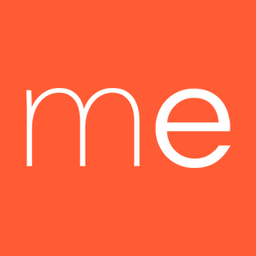The Final Exam Conundrum
Every end of semester, it’s time to face the age-old question of instructors everywhere: Did the students actually learn anything this time? As an instructor, you certainly hope so. But how do you know? That’s where the final exam comes in: the test to end all tests.
But not all final exams are made equal, and some will serve your purposes better than others. What lessons do you want your students to learn and keep with them as they go on?
While there are many final exam formats, they mostly fall into three categories.
The Multiple-Choice Exam
Perhaps the most popular format for final exams, everyone knows the multiple-choice exam. Easily able to cover a full semester’s worth of information with as many questions as the instructor needs, the multiple-choice exam’s flexibility makes it a useful final exam tool.
Advantages
– Easy Grading: Grading can often be automated and done without the instructor needing to go through every student’s test individually—MyEducator, for one, comes with automated grading—which makes life a breeze. This is particularly useful within large classes.
– Only Initial Effort Required: Once an exam is prepared, that’s it! The rest can easily be automated. Furthermore, your exam only needs to update when your material does!
Disadvantages
– Specific Testing Styles: Not everyone tests the same. The multiple-choice exam, while helpful, also relies on specific test-taking strategies, favoring those who memorize material.
– De-emphasis on Mastery: The multiple-choice exam requires that students know information; it does not test their ability to apply and use that knowledge. Memorization, not mastery, is the key to the multiple-choice exam.
The Essay
From simple, personal opinion essays to 20-page, heavily referenced papers, the essay has the ability to grow or shrink to encompass what an instructor needs. The essay is a versatile tool in an instructor’s toolbox. Essays are particularly useful for encouraging students to dive deep into one particular subject. Writing essays also encourages students to organize and put words to their understanding.
Advantages
– Format Freedom: Instructors can make essays as open-formatted or limited as they want. Some forms and limitations include compare-contrast, evaluative recall, illustration, classification, and application. Each of these essay formats requires that students engage with information in select ways.
– Information Measurement: The essay necessitates that students organize, summarize, integrate, and express ideas in their own way. It allows instructors a clear view of what a student understood and how well they are able to share that information.
Disadvantages
– Time-Consuming: The essay is time-consuming for both the instructor and student. Grading a paper can take both precious time and intense focus with little way to automate or speed up the process.
– Limited Content Sampling: No matter how long a paper is, it still covers at most a few elements of a semester’s worth of learning. While multiple-choice exams can cover the entirety of a semester, essays will cover a single subject, albeit in greater detail.
The Final Project
Perhaps the most versatile of all final exams is the final project. What is a final project? Well, it can be anything. Students can create an infographic, a YouTube video, a diorama, a website, or a presentation, for example. Depending on the subject and the student’s creativity, the possibilities are endless. That’s the beauty of it.
Advantages
– The Sky Is the Limit: When it comes to projects, both instructors and students can be as creative as they want. In the world of digital media, even more opportunities are available for students to demonstrate what they have learned in a unique way.
– Versatile Learning Styles: Instructors can offer multiple options for projects or craft requirements to tailor projects to the different learning styles of the majority of students.
Disadvantages
– Time-Consuming: A well-done final project will take students time to do. In the chaos of finals season, instructors may hesitate to place more work on their students’ plates. Students will often need to prepare well in advance or work on the project throughout the semester.
– No Automation: Because no two projects are alike, each project needs to be examined and graded on its own merits, which requires the personal attention of the instructor. There will also not always be a “correct” or “incorrect” answer, creating a level of subjectivity in grading.
There is no one-size-fits-all format for final exams, which is why it’s important to consider which one will best fulfill your purposes. No one knows your students or your subject better than you do. While your students may not thank you for it—it is a final, after all—they will benefit from the consideration you put into choosing their final exam.
References
Disha, M. “Essay Test: Types, Advantages and Limitations: Statistics.” Your Article Library, November 3, 2016. https://www.yourarticlelibrary.com/statistics-2/essay-test-types-advantages-and-limitations-statistics/92656.
Lee, Christine. “What Is the History of Multiple-Choice Exams? What Is Its Impact on Education?” Turnitin. July 13, 2022. https://www.turnitin.com/blog/what-is-the-history-of-multiple-choice-exams-what-is-its-impact-on-education.







